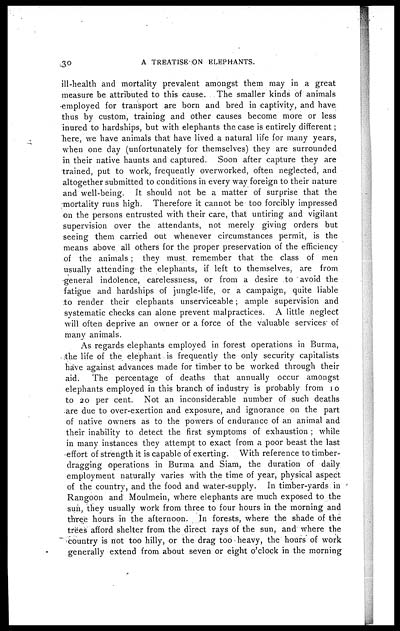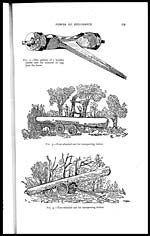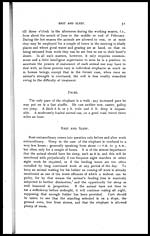Medicine - Veterinary > Veterinary diseases > Elephants and their diseases > Part I - Supply, general hygiene, gear, mounting and restraint
(60) Page 30
Download files
Individual page:
Thumbnail gallery: Grid view | List view

30 A TREATISE ON ELEPHANTS.
ill-health and mortality prevalent amongst them may in a great
measure be attributed to this cause. The smaller kinds of animals
employed for transport are born and bred in captivity, and have
thus by custom, training and other causes become more or less
inured to hardships, but with elephants the case is entirely different;
here, we have animals that have lived a natural life for many years,
when one day (unfortunately for themselves) they are surrounded
in their native haunts and captured. Soon after capture they are
trained, put to work, frequently overworked, often neglected, and
altogether submitted to conditions in every way foreign to their nature
and well-being. It should not be a matter of surprise that the
mortality runs high. Therefore it cannot be too forcibly impressed
on the persons entrusted with their care, that untiring and vigilant
supervision over the attendants, not merely giving orders but
seeing them carried out whenever circumstances permit, is the
means above all others for the proper preservation of the efficiency
of the animals ; they must remember that the class of men
usually attending the elephants, if left to themselves, are from
general indolence, carelessness, or from a desire to avoid the
fatigue and hardships of jungle-life, or a campaign, quite liable
to render their elephants unserviceable; ample supervision and
systematic checks can alone prevent malpractices. A little neglect
will often deprive an owner or a force of the valuable services of
many animals.
As regards elephants employed in forest operations in Burma,
the life of the elephant is frequently the only security capitalists
have against advances made for timber to be worked through their
aid. The percentage of deaths that annually occur amongst
elephants employed in this branch of industry is probably from 10
to 20 per cent. Not an inconsiderable number of such deaths
are due to over-exertion and exposure, and ignorance on the part
of native owners as to the powers of endurance of an animal and
their inability to detect the first symptoms of exhaustion ; while
in many instances they attempt to exact from a poor beast the last
effort of strength it is capable of exerting. With reference to timber-
dragging operations in Burma and Siam, the duration of daily
employment naturally varies with the time of year, physical aspect
of the country, and the food and water-supply. In timber-yards in
Rangoon and Moulmein, where elephants are much exposed to the
sun, they usually work from three to four hours in the morning and
three hours in the afternoon. In forests, where the shade of the
trees afford shelter from the direct rays of the sun, and where the
country is not too hilly, or the drag too heavy, the hours of work
generally extend from about seven or eight o'clock in the morning
Set display mode to: Large image | Zoom image | Transcription
Images and transcriptions on this page, including medium image downloads, may be used under the Creative Commons Attribution 4.0 International Licence unless otherwise stated. ![]()
| India Papers > Medicine - Veterinary > Veterinary diseases > Elephants and their diseases > Supply, general hygiene, gear, mounting and restraint > (60) Page 30 |
|---|
| Permanent URL | https://digital.nls.uk/75192200 |
|---|




